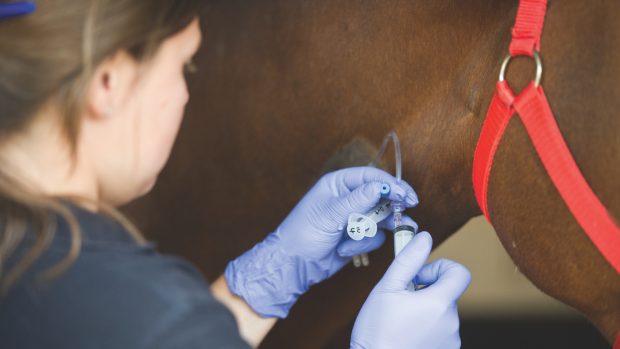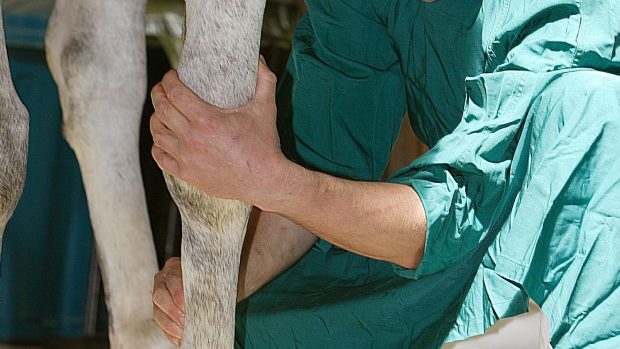“We owe it to them to listen” is the opinion of an expert behind a series of videos aimed at helping identify musculoskeletal pain and subtle lameness.
Dr Sue Dyson, head of clinical orthopaedics at the Animal Health Trust (AHT), played a leading role in the educational videos, which it is hoped will “improve the welfare and performance of the ridden horse”.
Recognising subtle lameness, a series of four videos “bringing to life the key findings of Dr Dyson’s studies”, also feature the expertise of Saddle Research Trust founder Anne Bondi, veterinary medicine behavioural specialist Jeannine Berger, equine vet and rehabilitation specialist Karin Liebbrandt and eventing coach, author and bridle designer William Micklem.
“Together they deliver a crisp, concise perspective on the many variable factors associated with pain-induced lameness including primary musculoskeletal pain, tack induced pain or rider induced pain,” said a spokesman for the series.
The first video covers familiar signs of lameness, moving on to less obvious signs such as equine facial expressions and behaviour.
The second “outlines a protocol for establishing the main sources of underlying pain associated with subtle or obvious lameness in horses”.
The third covers recognising the facial expressions of horses in pain and the fourth, to be released this month, is on rehabilitating a lame horse.
Dr Dyson, who has showjumped and evented to a high level, said she had repeatedly observed behavioural adaptations to pain, which inspired her research on the subject.
One outcome of her research is an ethogram for ridden horses’ facial expressions as a tool to help identify pain.
“I was fed up with seeing horses, often a long time after behavioural signs may have indicated something wasn’t quite right,” explains Dr Dyson.
“Owners would say ‘he’s always been a grumpy horse’, ‘he’s never been a willing horse’, ‘he’s never wanted to stand to be mounted’ and so on. So many vets are missing a trick by not seeing horses ridden as part of a lameness investigation – despite the fact most owners have horses in order to ride them. These things get missed at pre-purchase examinations too. Early recognition is nearly always advantageous for a better prognosis.
“I do understand why owners may want to bury their heads in the sand and not recognise that their horse has a problem, but it is just so important from a welfare perspective.
“Horses should be happy and it is our obligation not to exploit them. Quite simply, a pain-free horse will perform so much better. These videos should help riders, owners, trainers and vets understand what the horse is actually trying to say. We owe it to them to listen.”

Excess rider weight can cause lameness
Results of a landmark pilot study show the negative effect heavier riders can have on horse performance

Top vet identifies ‘naughty’ behaviours that might show your horse is lame
The latest research by Dr Sue Dyson to identify lameness through a horse’s behaviour and facial expressions has successfully completed

The rider weight debate and why it’s not fat-shaming: H&H responds
H&H responds to the latest news on a big issue for the equestrian industry
For all the latest news analysis, competition reports, interviews, features and much more, don’t miss Horse & Hound magazine, on sale every Thursday.
This week’s pony special, out 7 June, features Britain’s naughtiest ponies and how to find the dream smaller equine. We also look at the pros and cons of equine treadmills, talk to showing producer Aimee Devane and have reports from the H&H Festival of Eventing, Tattersalls Horse Trials, racing at Epsom and much more.





